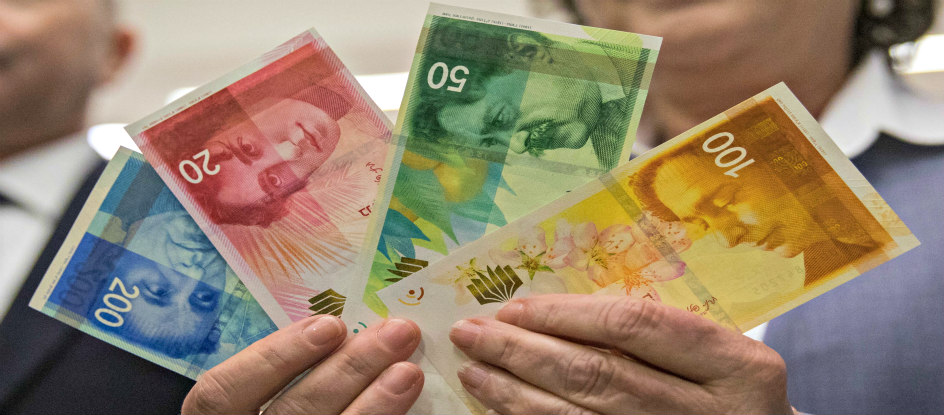Israel’s economy is booming. The failure of the Arabs and BDS movement campaigns to destroy it are as spectacular as the Arab failures to defeat Israel in the battlefield.

Economic indicators for Israel showed another successful year in 2017 as, for the first time ever, Israel’s GDP per capita has surpassed that of major industrialized countries such as Britain, Japan and France.
Israel stands out among the nations that won their independence after the Second World War. Despite facing more challenges than virtually any other country, Israel has transformed from a poor and fragile socialist backwater to a first world Start-Up nation of cutting-edge technologies and knowledge during seven brief decades, while fighting for its existence.
The failures of the Arab boycott and later the Boycott Divestment Sanction (BDS) campaign movement to destroy Israel’s economy are no less spectacular than the Muslim Arab failures to defeat Israel in the military battlefields. Israel’s economy is far stronger today than when BDS was launched in 2005.
The Economist publishes an annual global report with numerous data on the countries of the world. In its newly released report, Israel’s GDP per capita has, for the first time ever, surpassed $40,000. According to the Economist’s data, Israel’s GDP per capita grew from $38,127 in 2016 to $44,019 in 2017.
Israel’s economy expanded by 4.4 % during 2017, the highest growth rate among advanced economies. By contrast, the GDP per capita of France was almost $41,000 and nearly $40,000 for Japan.
Private consumer spending rose 3.0% in 2017, 1.1% per capita. Per capita spending on semi-durable goods (clothing etc.) grew 4.7%. Per capita spending on current consumption (housing, food, services, etc.) was up 2.2%. The account deficit in the government sector totaled NIS 8 billion in 2017, making up 1.1% of the GDP, down from NIS 15.6 billion in 2016.
The contrast between first world Israel and the surrounding third world Arab world is larger today than ever before. Israel’s GDP per capita is almost 20 times the GDP per capita of impoverished Egypt and five times larger than semi-developed Lebanon.
Like any human project, Israel is a never-ending work in progress and much work remains to integrate Haredi Jews and Israeli Arabs into Israel’s knowledge economy.
Properly addressing Israel’s high costs of living requires more economic and legislative reforms and breaking up inefficient oligopolies that keep the prices artificially high. However, by any standard, the reborn Jewish state is a remarkable success story that overcame tremendous odds and obstacles.
According to Professor Jonathan Adelman, author of the book The Rise of Israel – a history of a revolutionary state, Israel’s current success was far from certain and required two Zionist revolutions.
The first Zionist revolution was Socialist democratic and lasted roughly from the first modern Aliyah in 1882 to the defeat of the Israeli Labor party in the 1977 national election.
This revolution managed to build modern infrastructure and establish a relatively egalitarian society that ingathered millions of largely impoverished and unskilled Jews from the four corners of the world.
While largely redundant today, the Kibbutz movement played a disproportionate role during the state-building phase of modern Israel. Since resources and skilled labor were scarce, Socialist Zionism stressed the need for cooperation and focus on the needs of the emerging collective.
The second Zionist revolution is still ongoing and started with the victory of Menachem Begin’s Likud party in 1977. It became gradually apparent to Israel’s leaders that inefficient state-owned industries would not become competitive and profitable unless they were privatized.
During the stormy 1980s, Israel’s economy struggled with a hyperinflation that reached 450 % in 1985. By contrast, today Israel’s inflation is negligible.
After Arafat launched his terrorist war against Israel in 2000, Israel’s debt ratio reached roughly 100 % of GDP. Under the leadership of the current Prime Minister Benjamin Netanyahu, Israel’s debt ratio has been reduced to around 62 % today, one of the lowest in the developed world. Israel’s capitalist revolution is far from complete but has already paved the path for the emergence of Israel’s growing knowledge economy.
It has often been joked that after wandering in the wilderness for 40 years, the children of Moses settled in the only spot of the Middle East lacking oil: Israel. For a few decades, it seemed like the oil-rich Arabs had a clear edge over the oil-poor Jews.
Much has changed since OPEC launched its oil embargo against the West after the failed Arab aggression against Israel in 1973. Before the collapse of the pro-Arab Soviet empire, China and India had no official ties with Israel and many Western and Japanese companies avoided doing business with Israel.
Collapsing oil-prices have dramatically eroded the power of oil-producing countries. It has become obvious that the future belongs to those who innovate, not those who happen to sit on oil. Israel has today strong commercial ties with China and a thriving partnership with India. Business delegations from Jamaica to Japan are eager to do business with Israel and benefit from Israel’s expertise.
Israel is uniquely positioned to succeed in the emerging knowledge economy. Large gas fields off Israel’s coast, turned the Jewish state from an energy importer to an energy-exporting nation. However, Israel’s main asset remains what it always was: brainpower and ability to innovate. In an ironic twist of history, Syria, which was the most radical supporter of the Arab boycott against Israel is in ruin. By contrast, the target of the boycott, Israel, is thriving like never before.
Israel’s diverse innovation technologies benefit millions of people worldwide. BDS may bully Jewish and pro-Israeli students on Western campuses. However, in real life, BDS stands no chance to succeed against Israel. The reason is simple: reborn Israel has simply become a too valuable player in the global economy to ignore.
____________________
Daniel Kryger is a writer and a political analyst. He lives in Israel.
[Find this article interesting? You can find more in depth articles on Israel and the Middle East @en.mida.org.il]




Bravo, keep growing !!!!
“… And of Joseph he said Blessed of the LORD be his land, for the precious things of heaven, for the dew, and for the deep that couch beneath. And for the precious fruits brought forth by the sun, and for the precious things put forth by the moon. And for the chief things of the ancient mountains, and for the precious things of the lasting hills, And for the precious things of the earth and fullness thereof, and for the good will of him that dwelt in the bush: let the blessing come upon the head of Joseph, and upon the top of the head of him that was separated from his brethren. His glory is like the firstborn of his bullock, and his horns are like the horns of unicorns with he shall push the people together to the ends of the earth: and they are the ten thousands of Ephraim, and they are the thousands of Manasseh.”
If Israel’s econmy expanded by 4%, its GDP per capita could not have grown from $38,127 in 2016 to $44,019 in 2017(over 15%!) unless its population plummeted. And that clearly didn’t happen.
According to Israel’s Central Bureau of statistics GDP grew in 2017 by 3.5% annually. http://www.cbs.gov.il/reader/newhodaot/hodaa_template.html?hodaa=201808013
Since Israel’s population grew by about 2%, means that GDP per capita grew by about 1.5% only – not 15%, so to about $38698.
It looks that either you or the Economist multiplied the growth by a factor of ten.
Thank you- we will look into it and make the necessary corrections.
According to the Economist’s global report, Israel’s economy grew by 4,4 % in 2017. The per capita growth is lower since it takes into account the population growth.
According to the Economist, Israel’s GDP per capita reached 44,000 USD in 2017. The GDP is not only affected by economic growth but also by exchange rates. Since the Israeli Shekel has been very strong compared to the US dollar, it has boosted Israel’s GDP once it is calculated into USD.
https://press.economist.com/stories/11832-the-world-in-2018-from-the-economist-highlights-key-global-themes-to-watch-for-next-year
Please put me on your mailing list.
Thank you
We are working on one